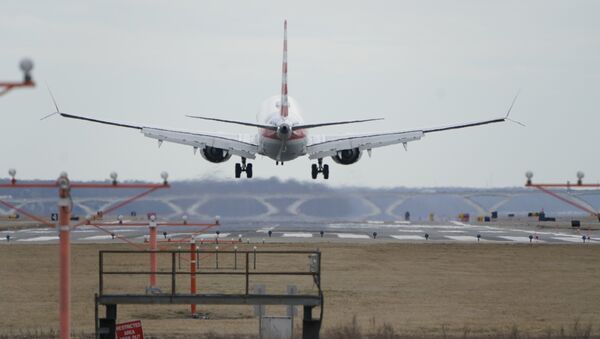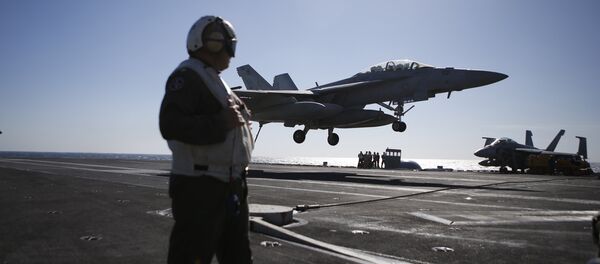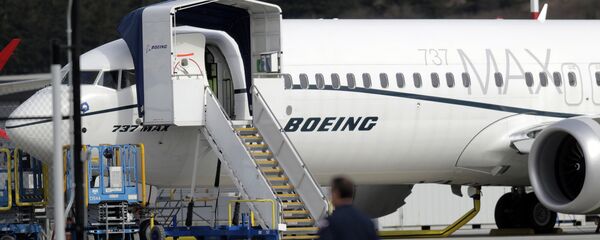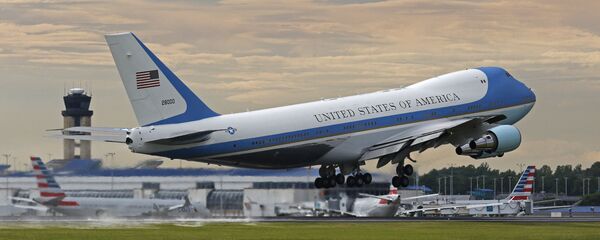Two crashes in five months have tremendously hit Boeing's market positions. Although the company has so far managed to handle the scandal, Ethiopian Airlines Flight 302 disasterhas reportedly revealed inconvenient truths about the leading US aircraft manufacturer.
A week after the Ethiopian Airlines catastrophe, Boeing CEO Dennis Muilenburg released a personal statement on the disaster.
"Safety is at the core of who we are at Boeing, and ensuring safe and reliable travel on our airplanes is an enduring value and our absolute commitment to everyone", he said, adding that soon the company would "release a software update and related pilot training for the 737 Max that will address concerns discovered in the aftermath of the Lion Air Flight 610 accident".
The two statements confirmed what has long been rumoured by aviation experts: there were a number of issues specifically related to the plane's software that sent the planes down within minutes after they had taken off the ground. It is believed that the Maneuvering Characteristics Augmentation System (MCAS) erroneous reading of the angle-of-attack indications could have led to the crashes.
clear similarities would be these six aspects:
— Peter Lemme (@Satcom_Guru) 18 марта 2019 г.
1) AoA large bias
2) stick shaker
3) Airspeed and Alt disagree
4) MCAS nose down trim with flaps up
5) MCAS persistent trim commands after every manual trim
6) stabilizer trimmed to nose down limit
Need FDR plot to know#JT610 #ET302
Fuel-Efficiency Problem at the Core
According to David Kammeyer, a software engineer and head of Mentality.ai, one should not blame the software alone: in fact, the story began with Boeing scrambling to solve an "economic problem" by producing a new version of the 737 jetliner with new fuel-efficient engines.
However, due to the size of the new engines it was impossible to install them in the place of the old ones. The solution was to mount them higher and more forward.
"That's sort of okay except that creates some problems with aerodynamics", Kammeyer told Chicago's Morning Answer, adding that "for technical aerodynamic reasons that makes the airplane more difficult to handle".
Therefore, he said, the company decided to put in an electronic handling assistance system called the Maneuvering Characteristics Augmentation System (MCAS), which automatically adjusted the pitch downwards to prevent the risk of stalling the engine.
This led to an
— Trevor Sumner (@trevorsumner) March 16, 2019
* Aerodynamic problem. The airframe with the engines mounted differently did not have adequately stable handling at high AoA to be certifiable. Boeing decided to create the MCAS system to electronically correct for the aircraft's handling deficiencies.
Why Did Boeing Keep MCAS a Secret?
However, according to pilot Denis Okan, who has flown on various versions of the Boeing 737, including the Max, since 2005, a few had known about the new MCAS software before the Indonesian crash in October 2018. He pointed out that MCAS was mentioned only once in the flight manual of the 737 Max, specifically, in the list of abbreviations.
The engineer singled out the maintenance practices problem: on the eve of the Lion Air jet crash, the plane's previous crew had experienced problems with MCAS, but didn't record them in the maintenance logbook.
To add to the controversy, it was hard to detect whether MCAS was working, Okan said: the electronic handling assistance system turned on silently when the plane's nose was angled too high, worked for a few seconds, directing the plane to the ground, and then automatically turned off when the angle of attack was lowered.
Furthermore, as The New York Times reported, both Indonesian and Ethiopian airliners lacked two safety features, which Boeing sells only as extras: an extra AoA (angle-of-attack) vane and an AoA "disagree light", which signals about the angle of attack problem. "Boeing's optional safety features, in part, could have helped the pilots detect any erroneous readings [by MCAS]", the media outlet highlighted.
The secrecy surrounding MCAS appears strange, given the fact that had Indonesian and Ethiopian crews known about the software, they would have disabled it while taking off the ground.
Following the Lion Air crash, The Wall Street Journal presumed that Boeing had intentionally withheld information about the MCAS feature, something which the company vehemently denied.
Despite Scandals and Inquiries, Boeing Remains Afloat
It took three days for the US Federal Aviation Administration (FAA) to "temporarily" ground Boeing 737 Max aircraft following the 10 March catastrophe, after China, the European Union, India, Australia, and Singapore suspended the airliner. To date, more than 30 countries have banned the problematic plane from their skies.
#FAA statement on the temporary grounding of @Boeing 737 MAX aircraft operated by U.S. airlines or in a U.S. territory. pic.twitter.com/tCxSakbnbH
— The FAA (@FAANews) 13 марта 2019 г.
According to Bloomberg, two 737 Max crashes in five months has dealt a heavy blow to Boeing's reputation: "Fleeing investors quickly trimmed more than $20 billion from Boeing's market value", the media outlet underscored.
For its part, CBS News specified that Boeing "has lost roughly $28 billion in value" since the Ethiopian Air jet crash.
The US media outlets have repeatedly referred to the Trump administration's favourable attitude towards the company, suspecting an apparent "conflict of interests".
On 18 March, The Wall Street Journal revealed that Federal prosecutors and Department of Transportation officials had launched an investigation into the FAA's approval of Boeing's 737 Max planes.





